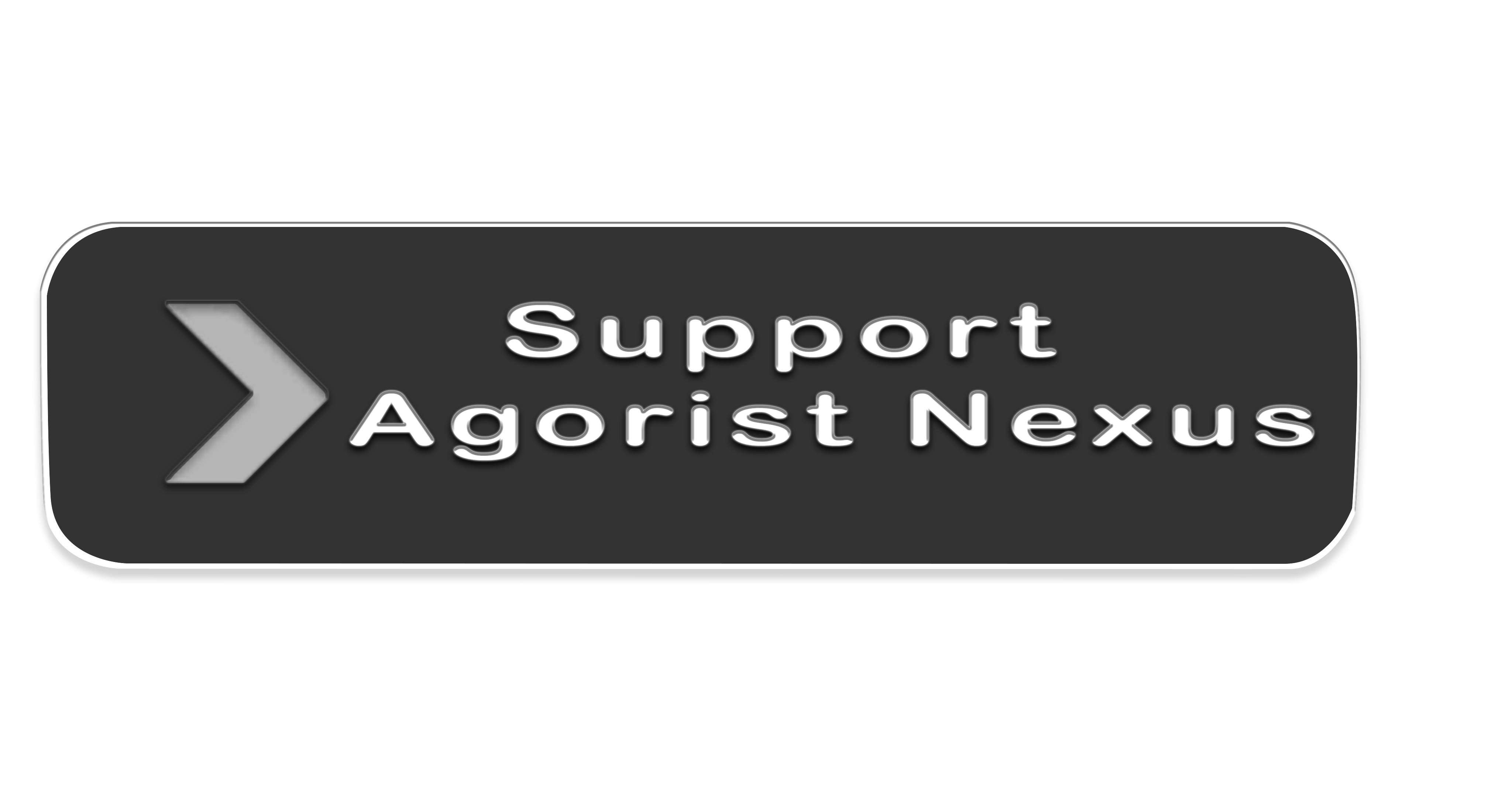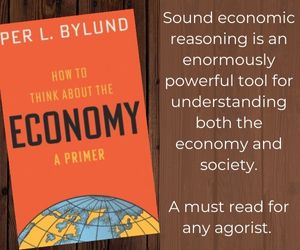
Broken NAP, or Broken Neck — Would You Break the NAP to Save Your Own Life?
While there are no gray areas in the NAP itself, there are plenty of contentious and debatable areas when it comes to application. This article seeks to examine some of these, clear up common areas of confusion, and reassure the reader that no, the NAP is not “flawed” as such, but that clear thinking still needed to develop policy for private law societies governed by this foundational principle.
Reexamining the Non-Aggression Principle
The idea of the NAP, or Non-Aggression Principle, is simple. It’s a foundational libertarian idea extending from the bedrock principle of individual self-ownership. The NAP says initiating aggression against the body or property of another individual is always a no go. The reason is a logical and straightforward one: if you violate the body or property of others, how can you reasonably expect them not to do the same to you? If you think everyone should be able to rape and pillage each other at will, why even have a conversation about how to best organize society for maximum peace in the first place?
Regardless of one’s moral views, religious beliefs, or personal predispositions, there is no refuting the simple fact that a uniform and universal ground norm must be present in any society for potential violent conflict in said society to be minimized.
In simple terms: if there are basic rights systematically recognized for some people, and not for others, violent conflict becomes inevitable. We see this breakdown in society today. Police in certain areas of the world presume to have a right to cage nonviolent human beings for merely possessing the “wrong” type of plant. Possessors of this forbidden plant may contend it is harmless, or even a necessary medical treatment for an illness. In a situation where inalienable rights were universalized, however, it would not matter what some other individual arbitrarily said about the plant.
As long as there was no violation of anyone’s body or property occurring directly caused by the possession.
In other words, live and let live. If your cousin Dave wants to be a stoner and play video games all day, so be it. That is his choice. If he wants to grow industrial amounts of cannabis and sell to individuals who want to buy it, that’s fine, too. He is not harming the body or property of anyone by doing this. It’s clear to see how such an arrangement differs from the brutally violent paradigm of today. There need be no conflict between himself and the enforcement of the NAP in his community. Try asking a cop or government to let you sell such a product without being put in a cage, taxed, fined or subjected to forced licensing now, however, and it becomes immediately clear which arrangement is more fair and peaceful.
Still, even in our much more peaceful, NAP-abiding paradigm, the problem arises: who gets to decide what specifically constitutes a violation of someone else’s body or property? How is property defined?
‘Gray Areas in the NAP’
I made the mistake a while back of making a YouTube video asserting that there were perhaps some gray areas in the non-aggression principle. I should have been much more careful with how I framed my expressions, but the video was as much a personal thought experiment for myself as anything else. Regardless, those fastidious and hardcore principled anarchists that lurk in YouTube comment sections (I identify as one, myself) found me in no time. I was summarily chided and corrected, and made a second video clarifying my now more enlightened stance. As one commenter pointed out: there need not be anything ‘gray’ about the NAP for contention to arise regarding its various applications in the real world.
The scenario I was mainly playing with was David Friedman’s flagpole conundrum. It goes basically like this:
Imagine you accidentally fall from your high rise apartment’s veranda. As you are plummeting to your almost certain death below, your eyes grab hold of a shiny object fast approaching. It’s a flagpole extending from someone else’s veranda! You’re just close enough to grab it and save yourself. You might hurt your arm, or bend or break their flagpole, but anything is better than becoming a lifeless lump of bloody flesh on the pavement.
Here’s the problem: you’ve just violated the non-aggression principle. As a humorous side note, I actually had one commenter protest that they might choose not to grab the flagpole and die by their principle. Still, it is true that grabbing the flagpole without the consent of the owner is a NAP violation. No getting around that. In the same way that a dude stumbling over your property line drunk is without your consent is also in violation. Legitimate questions arise here about the definition of “aggression” itself, though, to be fair.
Working Out the Blurry Bits Via the Free Markets
Another scenario Friedman has presented is that of stealing a gun from an unwilling individual in a crowd, in order to stop a mass shooting. For whatever reason, this stranger does not want to use their weapon to stop the shooter and does not want to let you use it, either. It’s undeniably a NAP violation to take his gun by force to defend the crowd, but that doesn’t necessarily mean it isn’t the moral thing to do. So how would a society of logical anarchists and agorists solve this type of dilemma? The short answer, of course, is the free market.
In the case of the flagpole violation, once my life is saved I could make restitution for any damage I may have done to the property, and any trouble or loss of time I may have caused the owner. Short of being a psychopath, the owner is not likely to want to fine me heavily or physically harm me for saving myself by way of his property. For the sake of argument though, let’s examine what would happen in a private law society where a property owner actually saw fit to severely harm or extort someone for an accidental NAP trespass.
Since each private society’s interpretation of how the NAP should be applied will differ at a policy level, some legal systems might permit heavy fines and extreme legal consequences for damage done by the veranda tumblers and heroes who stop mass shootings. This is highly unlikely, and would ultimately end in societal collapse, but is still technically possible. Others might involve specific clauses and agreements consented to by private property owners beforehand which stipulate that in such anomalous cases there is a cap on the severity of legal penalties that can be brought to bear, since there was risk of loss of life or limb and clear lack of malicious intent.
Further, societies and communities where private property owners create the most reasonable rules regarding these gray area situations are going to be the most successful, where peace and prosperity are the values being sought. Should individuals grossly misinterpret and misapply the NAP — behaving violently and erratically — the free market will surely punish them, by way of an invisible hand bitch slap. Here’s what this looks like.
Susan and the Drunk Teenager
Imagine there is a woman named Susan living in a completely private law, free market society. She has a decent chunk of land on the outskirts of town where she runs a large bakery that has become extremely successful over the years. There is absolutely nothing like Susan’s jumbo butter cinnamon rolls, and everyone in the community loves them, knows about Susan, and has come to view her bakery as a unique and charming staple of town life.
But then, one evening, all that changes.
A 17-year-old young man is walking home from a friend’s house, where he had just been drinking and playing video games late into the night. He is clearly inebriated, struggling even to walk in a straight line. As he passes Susan’s bakery, the smell of next morning’s baked goods and the lights in the windows catch his attention. He climbs the fence to get a better view. Straining to see into the far away windows, he loses his balance and falls over the fence, landing on the other side. He twists and breaks his ankle in the process. Susan hears him scream in pain from inside the bakery. She checks her CCTV camera, and rushes outside. When she arrives at the spot where the whimpering teenager lay, she raises her shotgun, and blows his head off for violating the NAP.
If this situation seems laughably unrealistic to you, it’s because it is. Logical societies of individuals set up policies where the penalties are sensible and proportional to the violation. Things like Susan’s case simply do not happen in real life, outside perhaps of the extremely rare case of psychopathy run amok. That’s also not to mention the miracle of such a volatile and violent woman building up a hugely successful bakery and great rapport with a whole community of individuals — some very perceptive and well balanced — over years and years and years, with no one ever noticing her underlying issues. It would more reasonably be argued that Susan violated the NAP in this case, in extreme fashion.
But let’s assume such a situation actually did occur. What would it look like for Susan and her bakery in the aftermath of the shooting?
Well, first of all, no sane person is going to want to shop there anymore. As good as those jumbo butter cinnamon rolls are, supporting a cold blooded killer just feels…wrong. Second, if the town’s legal policy interprets the NAP as permitting such senseless carnage, that town is doomed to fail for the reasons delineated at the outset of this article. In short, if murder is permissible, nobody can be secure in their person or property, and thus nobody can reliably produce goods or trade. Such a society would eventually burn itself out. Another factor to consider is the deceased young man’s armed, bereaved parents. It’s not hard to imagine Susan might be scared for her life after the murder.
Self-Ownership: The Black and White Foundation of the NAP
Whatever debate and contention there may be surrounding the application of the non-aggression principle at a policy level, what remains at the end of the day as non-debatable is this: The NAP never justifies violating the body or property of others.
The gray areas enter where it may be most expedient for the violated party to forgo — temporarily, in part, or altogether — application of NAP enforcement in view of preservation of peace, commerce, social capital, and life itself. If you push me out of the way of an oncoming bus, you most certainly violated the NAP. I’m not likely to want to press charges and sue you, though, or punch you in the face in “self-defense.” Doing so would not only be wildly unreasonable, but could also significantly compromise my reputation and economic opportunities down the road.
Luckily, in spite of these unlikely and far-fetched scenarios, the NAP is still an infinitely better and more logical model than violent and chaotic disorder, i.e. statism. It is based on the objective, immutable reality of self-ownership, which even the physical laws and realities of the universe bear witness to. Nobody could have used my brain more directly than me to write this article. To strike the keys on the keyboard with my fingers, or to think of the ideas contained herein. I am the smallest independently functioning unit of any abstract collective to which I may belong and in which I may take part. I am the individual, the smallest minority. As such, to arbitrarily violate individuals by harming their bodies or property (in non self-defense) is inevitably to violate the whole abstract collective itself, and render it non-functional.
Without the universal recognition of the self-ownership of other individuals, in other words, peaceful coexistence is impossible.









